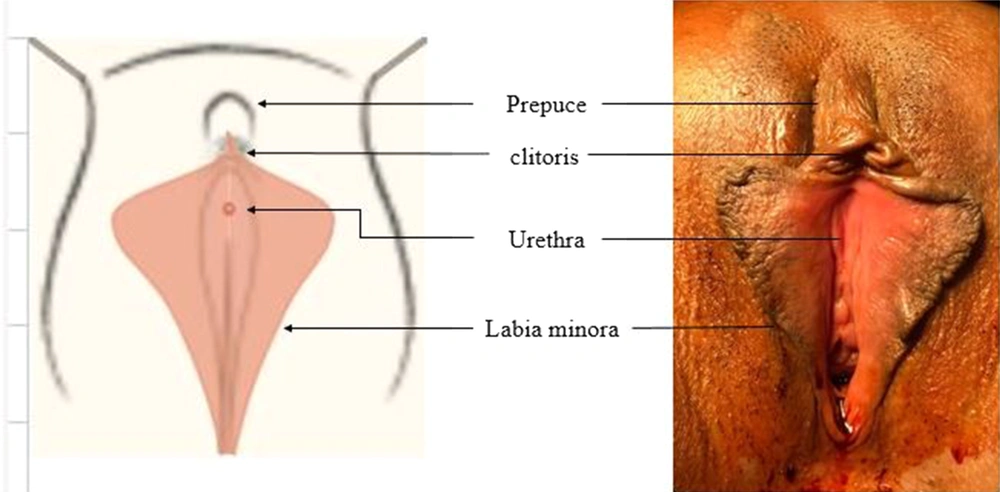Dear Editor,
The outward appearances of the women's external genitalia vary significantly, rendering the definition of "normal" genitalia a subjective matter (1). Despite the growing prevalence and frequency of labiaplasty surgeries, there is limited understanding of the typical range of labia appearance, which could inform medical education, patient consultation, and surgical interventions. Educating girls and women about the diversity of external genitalia can help them increase their awareness of this issue and, therefore, avoid unnecessary surgeries (2, 3).
Genital photography for cosmetic surgery is limited in some countries in order to preserve personal dignity and comply with religious codes (4). To document a patient's labiaplasty case, however, it is necessary to record genitalia photos before and after the surgery. Currently, genital photography is permitted in some limited cases only after obtaining the patient's consent; however, the photos cannot be attached to the patient's file and are only available to the doctors or the patients. As a result, the documentation of a case is sometimes completed by simply recording the measured numbers on the patient's history.
The absence of photos in medical records of patients seeking female genital cosmetic surgeries is quite problematic. To address this problem and protect the patient's privacy, a photo equivalence and labiagram software system (i.e., schematic design of labia minora) was designed. Labiagram enables the practitioners to draw a schematic diagram similar to the patient's anatomy using the numbers measured from different external genital points (Figure 1).
Labiagram is a web-based system that can be installed on and used by various devices such as smartphones, tablets, and computers. It can be connected to a clinic's local network or to a secure online website on the internet. This system was developed using C#.Net 2022 programming language, while SQL Server 2019 was utilized for storing and retrieving the data from the database.
In sum, the labiagram system is a valuable tool that enables medical professionals to educate and counsel patients seeking labiaplasty surgeries. It provides a visual representation of the patients' anatomies without harming their privacy or dignity. Increasing the awareness of individuals about the natural variation in external genitalia can help them make informed decisions about their bodies and, therefore, avoid unnecessary surgeries. The labiagram system is an accessible and affordable solution that can improve patient outcomes and promote medical education. Therefore, it is essential to incorporate the application of this system into the medical education and patient counseling program in order to facilitate informed decision-making processes and prevent unnecessary surgeries.

